The Chicago Air & Water Show at 1000mm focal length
Oct 14, 2018 11:39:09 #
The Chicago Air & Water Show is a free event that showcases daredevil pilots, parachute teams, and military performance teams flying jets in tight formation, as well as water rescue demonstrations. The show has been held annually since 1959. In the event's 2nd year, the US Air Force Thunderbirds and US Army Golden Knights Parachute Team were added to the show. The US Navy Blue Angels and Air Force Thunderbirds now alternate their annual participation at the event.
Throughout 2018 there were regular UHH questions about using extenders and teleconverters. I use both the Canon Series III 1.4x and 2x extenders, primarily with prime lenses, and have been filtering metadata in my Lightroom catalog to find examples that demonstrate the possibilities when mounted to different Canon L lenses. This post discusses the history of the Canon EF 500mm f/4L IS II USM used with an EF 2x III Extender that creates a 1000mm focal length combination.
US Coast Guard by Paul Sager, on Flickr
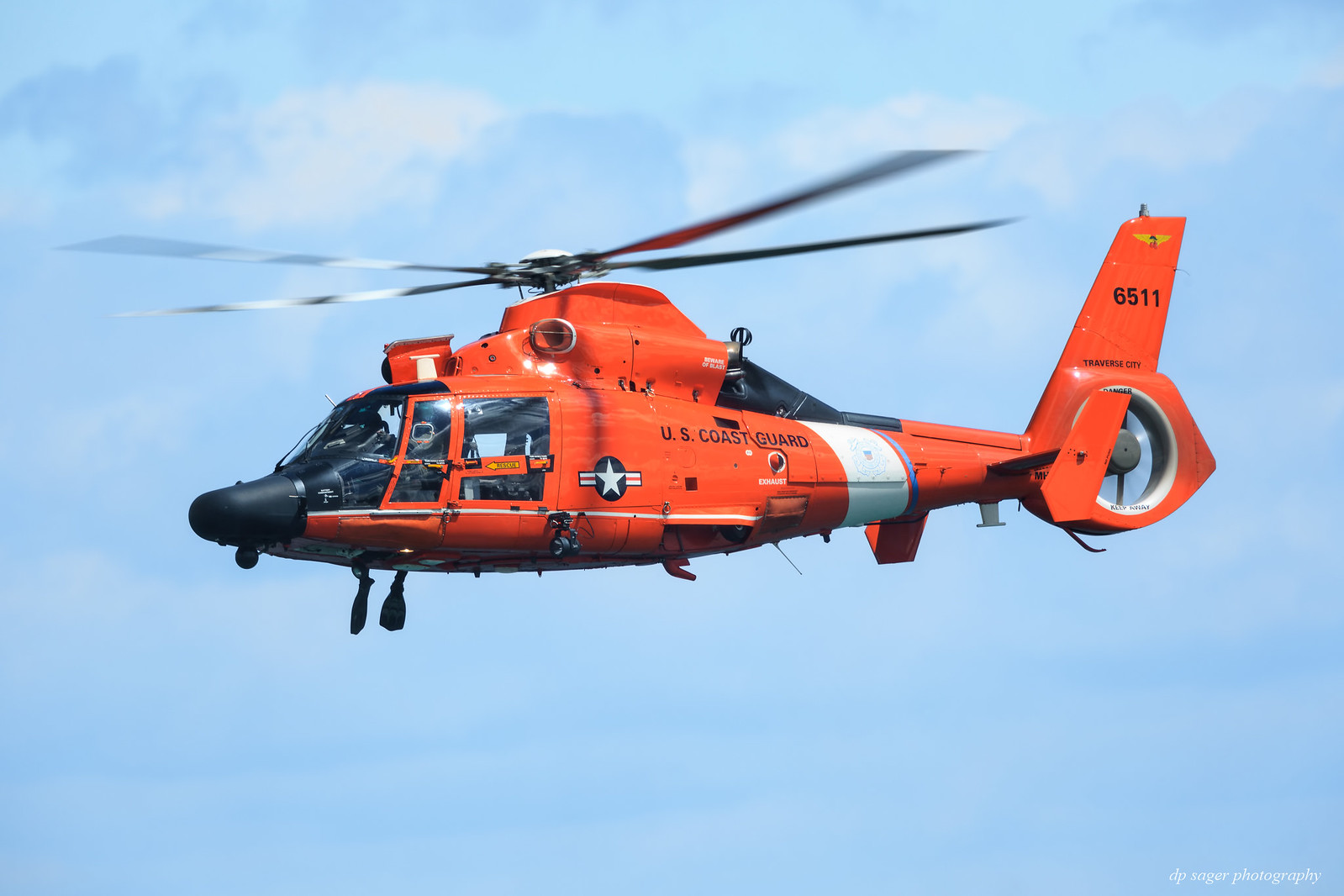
The Canon EF 500mm f/4L IS II USM was released in 2011 and copies were rented from LensRentals.com for use at the 2016 and 2017 Chicago Air & Water Shows. All images employ the EF 2x III Extender extending the focal length by 2x to 1000mm. The Series III Extenders (also commonly called teleconverters) have an integrated microcomputer designed specifically for use with compatible Canon IS Supertelephoto Series II lenses, such as the 500L.
Susan Dacy is a Chicago based International Captain for American Airlines, currently flying the 777. She is one of only a few females performing airshows in a biplane, and is the only woman flying exhibition in the Super Stearman.
Susan Dacy in Big Red

Canon's first 500mm L-branded super telephoto lens was released in 1979 using the manual focus FD mount. The lens cost 440,000 Yen, about $2000 in 1979 or about $7,200 in 2018. With the marketing for the new L-brand, the naming of S.S.C. (Super Spectra Coating) and S.C. (Spectra Coating) were discontinued. The FD 500mm f/4.5L employed special optical elements, such as fluorite elements, UD (Ultra-low Dispersion) glass elements, and ground and polished glass aspherical lens elements. The group of super telephoto lenses, 300mm to 800mm, were called "Luxury" lenses and "L" become a synonym for Canon’s high performance lenses, identified by their white color and iconic red band around the lens front.
Team AeroShell

A potential disadvantage of using of a 2x extender (of any brand or model) is the max aperture setting of the related lens is reduced / narrowed by 2-stops, allowing at most 1/4 as much light onto the sensor. The lens aperture still opens to the same physical diameter, f/4 in the case of the 500L, but the ratio of the aperture opening to the focal length is reduced by 2-stops. When extended to 1000mm, the f/4 lens operates like f/8 where a limited set of EOS bodies retain autofocus for lenses with a maximum aperture smaller than f/5.6. Although the EOS 5DIII used for these images retains autofocus at f/8, the camera can autofocus only using the center AF point. The camera does provide 4 "helpers" AF points surrounding the center point.
Blue Angels

The US Navy's Blue Angels team was formed in 1946 and currently flies the McDonnell Douglas F/A-18 Hornet. Each year the Blue Angels' six demonstration pilots perform in more than 70 shows throughout the United States.
The FD mount 500 f/4.5L lens was updated in 1981, retaining the f/4.5 aperture. Similar to the original lens, the new lens retained the white color and red ring. The weight was reduced by 340 grams to 2,950g (6.5 lbs).
P-51 Mustang "Baby Duck"
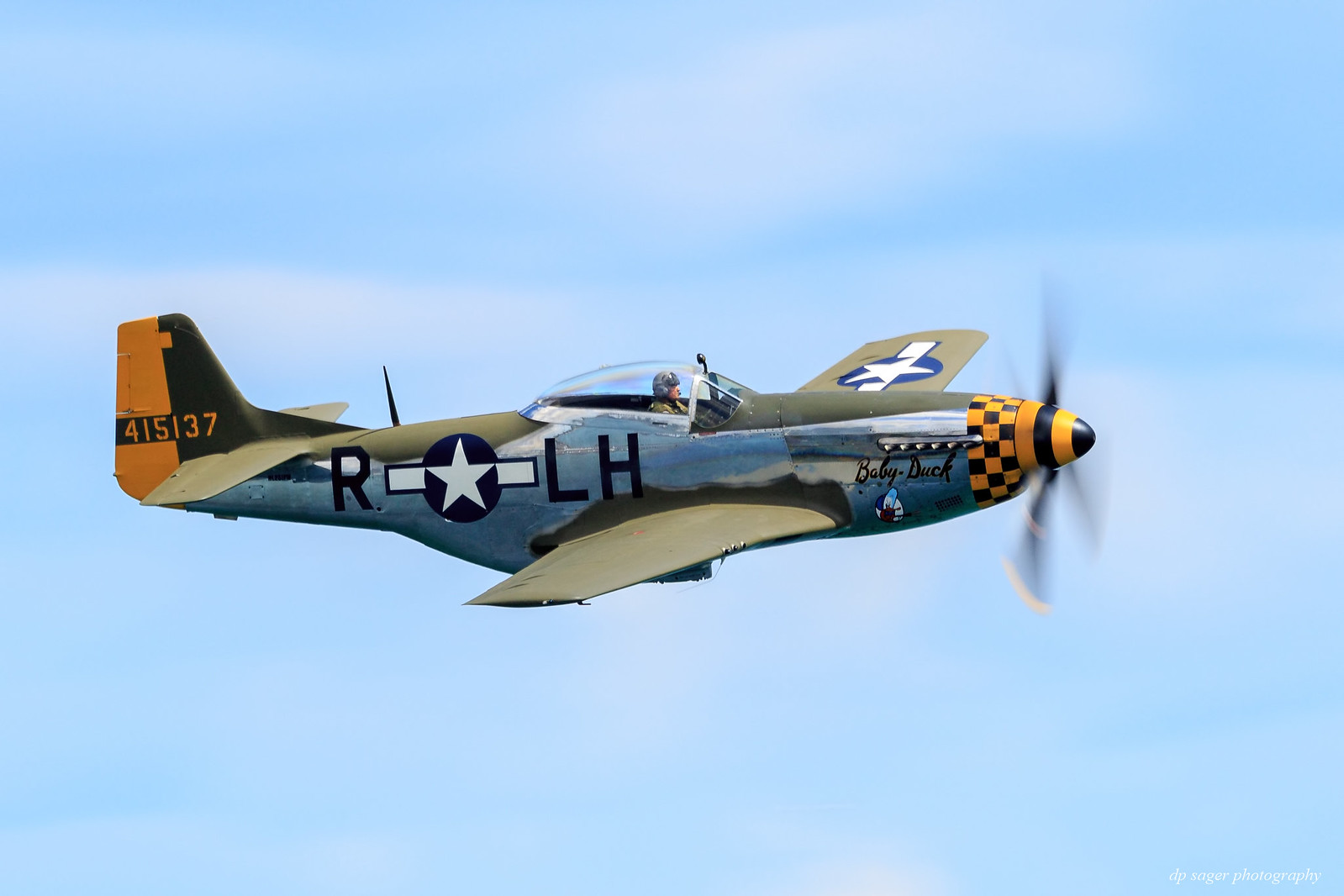
The Air Sea Rescue Unit within the Chicago Fire Department was established in 1965, where they provide search and rescue services for 37 miles of lakefront, an extensive river system, numerous lakefront venues, and the largest harbor system in the U.S.
Chicago FD and water rescue demonstration
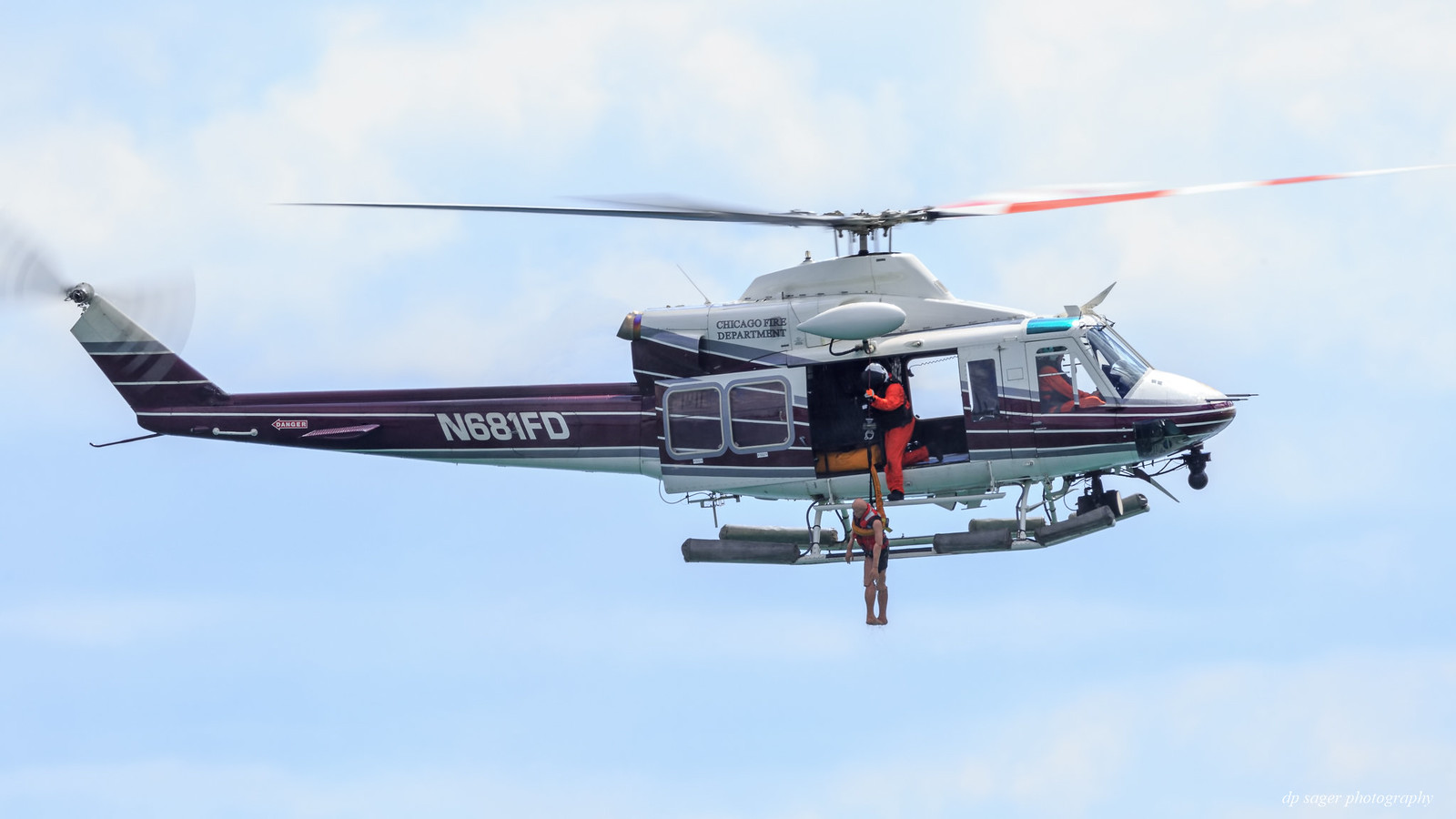
Canon released the new Electro-Optical System (EOS) in 1987 and discontinued support for the older manual focus FD lenses and cameras. All EOS cameras used 35 mm film until 1996. In 2000, Canon released their first digital SLR. Since 2005, all EOS cameras have used digital image sensors rather than film. The bayonet-style EF lens mount is the center of the EOS camera system. Breaking compatibility with the earlier FD mount, the EF mount was designed with no mechanical linkages between moving parts in the lens and in the camera. The aperture and focus are controlled via electrical contacts, with motors in the lens itself.
The 500mm super telephoto lens retained the f/4.5 aperture when the first EF 500mm f/4.5L was released in 1992. At 3,000 grams (6.6 lbs), the lens was considered light weight and compact as a super telephoto lens suitable for hand-held shooting. The lens was popular, and succeeding versions remain popular, among sports and wildlife photographers.
Sean D. Tucker
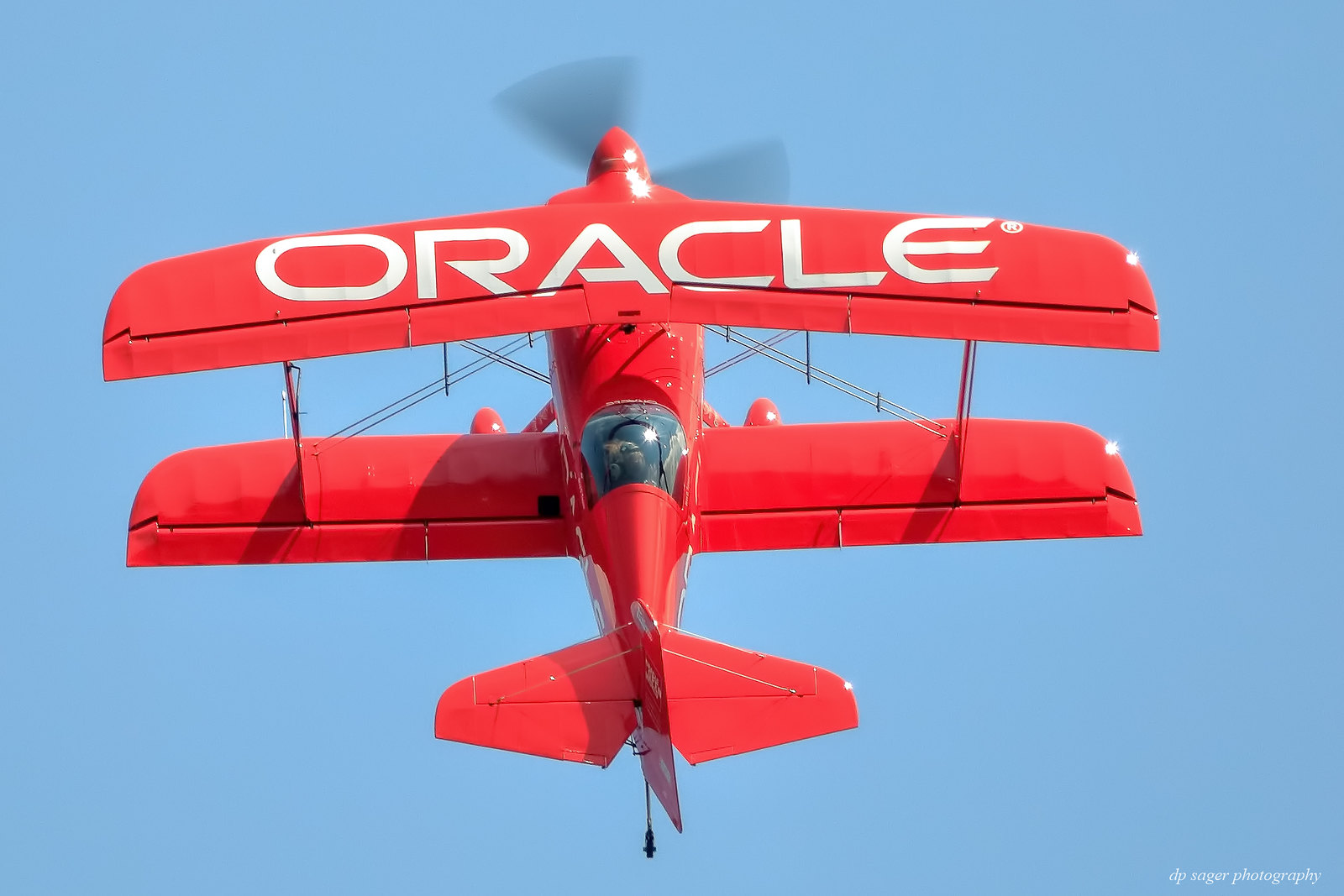
Sean D. tucker has announced 2018 will be his last as a solo performer. He has flown more than 1,300 performances since 1976. He currently serves as Chairman of the Experimental Aircraft Association's Young Eagles program.
In 1999 Canon released the first f/4 version of the 500L adding camera shake correction (IS - Image Stabilization) effective to 2-stops in terms of shutterspeed.
Susan Dacy in Big Red
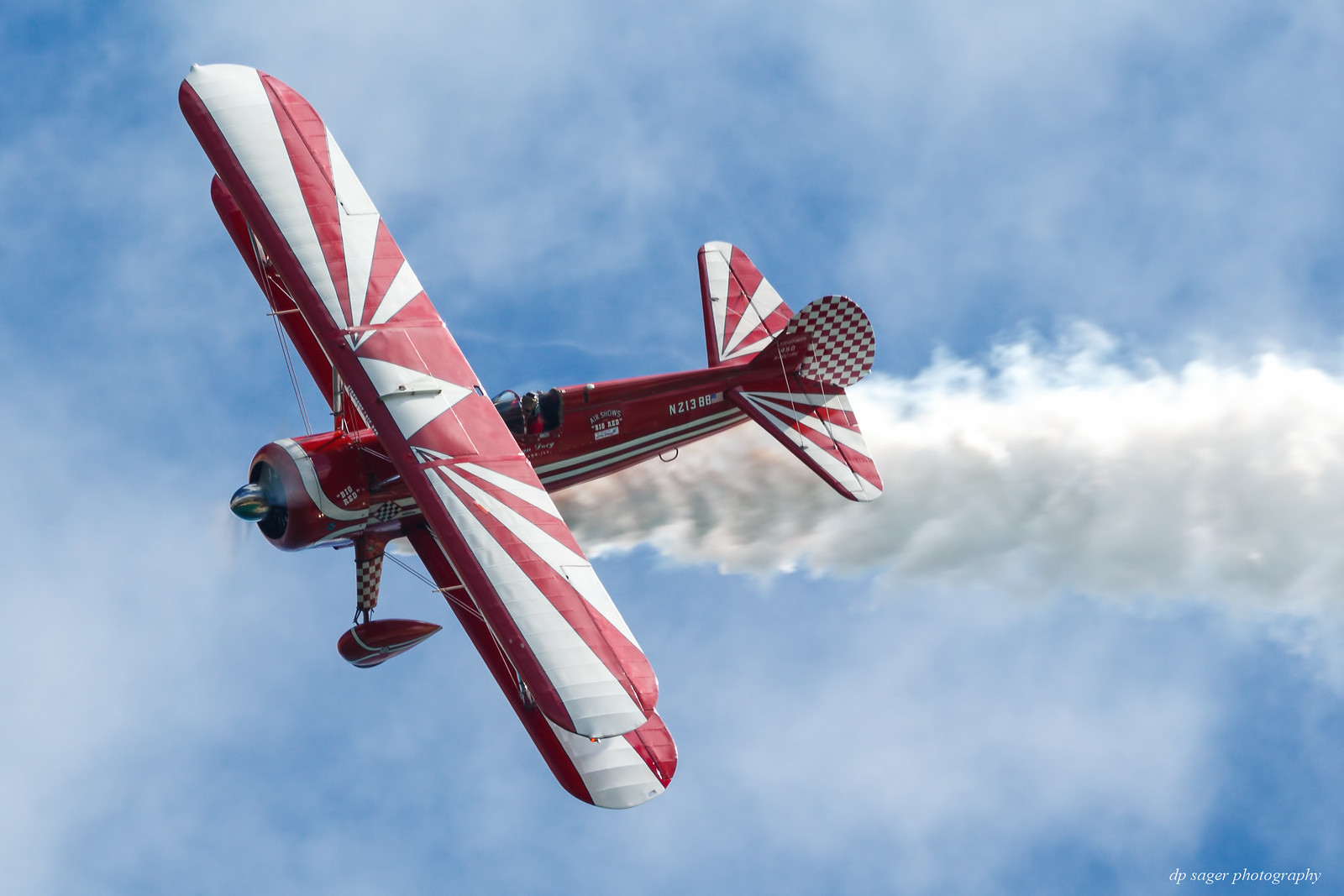
Canon's super telephoto lenses have a secondary IS mode that automatically senses when a tripod is being used and, at shutter speeds between 1/30th and 1 second, adjusts to compensate for mirror slap, shutter and other subtle tripod-based vibrations. The IS system automatically disables itself during tripod use when shutter speeds longer than 1 second are used. The images shown here were all captured with the 500L mounted to a gimbal head on a tripod stationed at the water's edge on the shore of Lake Michigan in Chicago, IL. The 1000mm focal length can provide relatively "close" images of single planes performing over the lake, but can be "too close" for the 6-plane performance teams like the Blue Angels and Thunderbirds.
The images are sized to fill your wide-screen display. Try using <F11> to maximize your browser window for the full effect. If the images overshoot your display, such as a laptop, just click on the image or the URL link and they'll resize to your screen from the host Flickr site. You can click a bit further into the image details on the Flickr page, if desired. EXIF data is available from the host Flickr pages as well. On the Flickr site, use your <L>key for Large and the <F11> for the full-screen.
Throughout 2018 there were regular UHH questions about using extenders and teleconverters. I use both the Canon Series III 1.4x and 2x extenders, primarily with prime lenses, and have been filtering metadata in my Lightroom catalog to find examples that demonstrate the possibilities when mounted to different Canon L lenses. This post discusses the history of the Canon EF 500mm f/4L IS II USM used with an EF 2x III Extender that creates a 1000mm focal length combination.
US Coast Guard by Paul Sager, on Flickr

The Canon EF 500mm f/4L IS II USM was released in 2011 and copies were rented from LensRentals.com for use at the 2016 and 2017 Chicago Air & Water Shows. All images employ the EF 2x III Extender extending the focal length by 2x to 1000mm. The Series III Extenders (also commonly called teleconverters) have an integrated microcomputer designed specifically for use with compatible Canon IS Supertelephoto Series II lenses, such as the 500L.
Susan Dacy is a Chicago based International Captain for American Airlines, currently flying the 777. She is one of only a few females performing airshows in a biplane, and is the only woman flying exhibition in the Super Stearman.
Susan Dacy in Big Red

Canon's first 500mm L-branded super telephoto lens was released in 1979 using the manual focus FD mount. The lens cost 440,000 Yen, about $2000 in 1979 or about $7,200 in 2018. With the marketing for the new L-brand, the naming of S.S.C. (Super Spectra Coating) and S.C. (Spectra Coating) were discontinued. The FD 500mm f/4.5L employed special optical elements, such as fluorite elements, UD (Ultra-low Dispersion) glass elements, and ground and polished glass aspherical lens elements. The group of super telephoto lenses, 300mm to 800mm, were called "Luxury" lenses and "L" become a synonym for Canon’s high performance lenses, identified by their white color and iconic red band around the lens front.
Team AeroShell

A potential disadvantage of using of a 2x extender (of any brand or model) is the max aperture setting of the related lens is reduced / narrowed by 2-stops, allowing at most 1/4 as much light onto the sensor. The lens aperture still opens to the same physical diameter, f/4 in the case of the 500L, but the ratio of the aperture opening to the focal length is reduced by 2-stops. When extended to 1000mm, the f/4 lens operates like f/8 where a limited set of EOS bodies retain autofocus for lenses with a maximum aperture smaller than f/5.6. Although the EOS 5DIII used for these images retains autofocus at f/8, the camera can autofocus only using the center AF point. The camera does provide 4 "helpers" AF points surrounding the center point.
Blue Angels

The US Navy's Blue Angels team was formed in 1946 and currently flies the McDonnell Douglas F/A-18 Hornet. Each year the Blue Angels' six demonstration pilots perform in more than 70 shows throughout the United States.
The FD mount 500 f/4.5L lens was updated in 1981, retaining the f/4.5 aperture. Similar to the original lens, the new lens retained the white color and red ring. The weight was reduced by 340 grams to 2,950g (6.5 lbs).
P-51 Mustang "Baby Duck"

The Air Sea Rescue Unit within the Chicago Fire Department was established in 1965, where they provide search and rescue services for 37 miles of lakefront, an extensive river system, numerous lakefront venues, and the largest harbor system in the U.S.
Chicago FD and water rescue demonstration

Canon released the new Electro-Optical System (EOS) in 1987 and discontinued support for the older manual focus FD lenses and cameras. All EOS cameras used 35 mm film until 1996. In 2000, Canon released their first digital SLR. Since 2005, all EOS cameras have used digital image sensors rather than film. The bayonet-style EF lens mount is the center of the EOS camera system. Breaking compatibility with the earlier FD mount, the EF mount was designed with no mechanical linkages between moving parts in the lens and in the camera. The aperture and focus are controlled via electrical contacts, with motors in the lens itself.
The 500mm super telephoto lens retained the f/4.5 aperture when the first EF 500mm f/4.5L was released in 1992. At 3,000 grams (6.6 lbs), the lens was considered light weight and compact as a super telephoto lens suitable for hand-held shooting. The lens was popular, and succeeding versions remain popular, among sports and wildlife photographers.
Sean D. Tucker

Sean D. tucker has announced 2018 will be his last as a solo performer. He has flown more than 1,300 performances since 1976. He currently serves as Chairman of the Experimental Aircraft Association's Young Eagles program.
In 1999 Canon released the first f/4 version of the 500L adding camera shake correction (IS - Image Stabilization) effective to 2-stops in terms of shutterspeed.
Susan Dacy in Big Red

Canon's super telephoto lenses have a secondary IS mode that automatically senses when a tripod is being used and, at shutter speeds between 1/30th and 1 second, adjusts to compensate for mirror slap, shutter and other subtle tripod-based vibrations. The IS system automatically disables itself during tripod use when shutter speeds longer than 1 second are used. The images shown here were all captured with the 500L mounted to a gimbal head on a tripod stationed at the water's edge on the shore of Lake Michigan in Chicago, IL. The 1000mm focal length can provide relatively "close" images of single planes performing over the lake, but can be "too close" for the 6-plane performance teams like the Blue Angels and Thunderbirds.
The images are sized to fill your wide-screen display. Try using <F11> to maximize your browser window for the full effect. If the images overshoot your display, such as a laptop, just click on the image or the URL link and they'll resize to your screen from the host Flickr site. You can click a bit further into the image details on the Flickr page, if desired. EXIF data is available from the host Flickr pages as well. On the Flickr site, use your <L>key for Large and the <F11> for the full-screen.
Oct 14, 2018 11:46:27 #
CHG_CANON wrote:
Paul, Great images. My favorite is the second one. It's title to me is "Here I come, Ready or not"The Chicago Air & Water Show is a free event t... (show quote)
Thanks for sharing
Enjoyed the technical part even though I am a Nikon guy

Oct 14, 2018 11:50:58 #
Oct 14, 2018 12:05:46 #
Oct 14, 2018 12:09:02 #
Oct 14, 2018 12:09:50 #
Oct 14, 2018 12:14:42 #
Oct 14, 2018 12:15:03 #
rdubreuil
Loc: Dummer, NH USA
CHG_CANON wrote:
The Chicago Air & Water Show is a free event t... (show quote)
Great series CC, well done...
Oct 14, 2018 12:19:29 #
Oct 14, 2018 12:23:03 #
Great set Paul! Just shows that all teleconverters are not “bad” - it all depends on the lens and the TC combination.
Oct 14, 2018 12:28:31 #
CHG_CANON wrote:
The Chicago Air & Water Show is a free event t... (show quote)
Impressive, both the work and the capability of the lens combo, great shots
Oct 14, 2018 12:29:34 #
Oct 14, 2018 12:33:30 #
Thanks for sharing. I always enjoy your pictures and your expertise commentary. As always a great post. Thank you.
WJH
WJH
Oct 14, 2018 13:26:47 #
Thank you williejoha, PH CIB, bobmcculloch, TriX, bulldawg, rdubreuil, TonyF, jerryc41, James56, Bultaco, erickter, PixelStan77! I was looking at older FD lenses for my Sony and found the FD 500 and some other lengths, all from sources in Japan. While looking at offerings closer to home from KEH, I found they have a 1.4x extender that will work with the FD 300L I've been using at the Brookfield Zoo. Maybe not a straight shot from that topic, but I found myself sorting focal lengths in Lightroom and decided to pull together this post about the 500L and the 2x extender. Alas, I'm finding older work needs rework before posting. I've been shooting RAW since 2011, so the images start fresh for fresh crops and new technique in processing. Glad you enjoyed and hopefully there will be interested in other lenses and topics if / when the re-editing is completed.
Oct 15, 2018 06:31:10 #
If you want to reply, then register here. Registration is free and your account is created instantly, so you can post right away.








